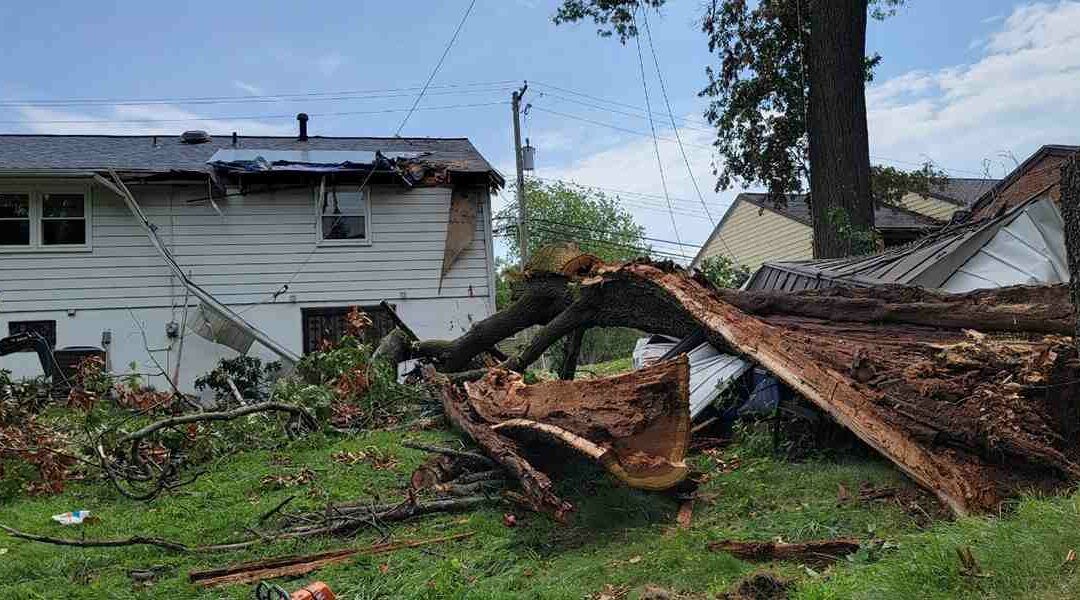Do you have a tree hit by lightning? It’s a lot more common than you think. Thousands of trees are struck every year. Storms that form below the Atlantic coastal region can eventually reach the heart of Maryland and wreak havoc.
As the go-to tree service in Brandywine, our team at Hernandez Complete Tree Service knows how to address unexpected arboreal emergencies with expertise and precision. Keep reading as we share insight and help give your beloved specimen the best chance of surviving post-electrical charge.
Why Trees Seem Like Lightning Magnets
The common advice to take shelter under a tree during tumultuous weather is actually a dangerous misconception because trees:
- Are tall structures, making them natural lightning rods
- Are good conductors because they have a high moisture content
- Have a network of roots that can spread the electrical charge to nearby areas
Many varieties are up to 300% more prone to sustain lightning strikes than others. Oaks, pines, sycamores, maples, poplars, and gum trees top the list. If you have these species in your yard, especially at a high elevation or an isolated location, keep an especially keen eye on them during storm season.
What Happens To Lightning-Damaged Trees
A lightning bolt carries over 100 million volts and reaches temperatures up to 54,000F. That’s why a tree hit by lightning has a 50/50 chance of survival.
The extreme temperatures can swiftly boil the water and sap inside the plant and cause the wood fibers and bark to explode. Since electricity follows the best conductor in trees, it can either travel from the canopy to the roots or only affect a portion of a trunk or branch.
The Symptoms
Damage can manifest in various forms, including:
- A long, narrow crack that exposes the interior
- Wilting and browning foliage days after the event
- Bark peeling off, unveiling raw wood or a burnt area
- An off-beat, sour smell that might indicate the tree is decaying
- Sudden and unexpected leaf shedding or branch dropping
Unfortunately, the warning signs are not always immediate or obvious. Internal damage can go unseen for weeks or even months. The moment you spot symptoms of declining health, act quickly.
What To Do Next
Your safety should be your top priority. If your tree looks structurally compromised or is currently burning, call the local fire department. Follow these recovery steps for milder cases.
Conduct Regular Inspections
Even the slightest change in your tree’s health could be cause for concern. Make it a habit to check on your trees after a storm. Look for visible injuries and signs of distress, such as wilting leaves or branch dieback.
Carefully Prune the Dead Branches
Most of the heat damage will manifest itself within a few weeks. Give the tree time to recover before deciding to trim the affected branches. Trimming too soon can stress the tree further.
Prevent Infections and Infestations
A weakened specimen is more susceptible to pests and disease. We highly recommend applying preventative treatments for any suspected vulnerabilities or existing problems in your area.
Water and Fertilize Appropriately
The last thing a lightning-struck tree needs is further stress from dehydration or nutrient deficiency. Make sure to provide generous water and apply a balanced, slow-release fertilizer to help it recuperate. Mulching also helps retain soil moisture and regulate the temperature.
Consult a Local Arborist
A tree hit by lightning needs the best care and attention it can get. While it’s possible to handle some steps yourself, expert intervention can make a world of difference. Our crew at Hernandez Complete Tree Service will treat your treasured specimen and install a lightning protection system for future prevention.
Dial 240-299-4639 or explore our blog and learn how to protect trees from hurricane damage.


